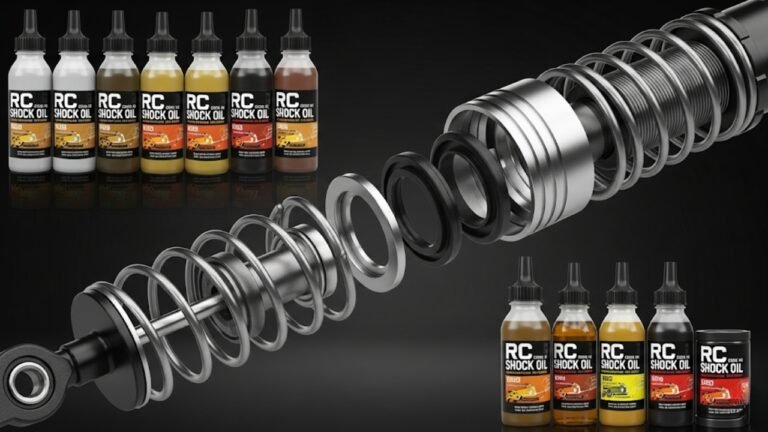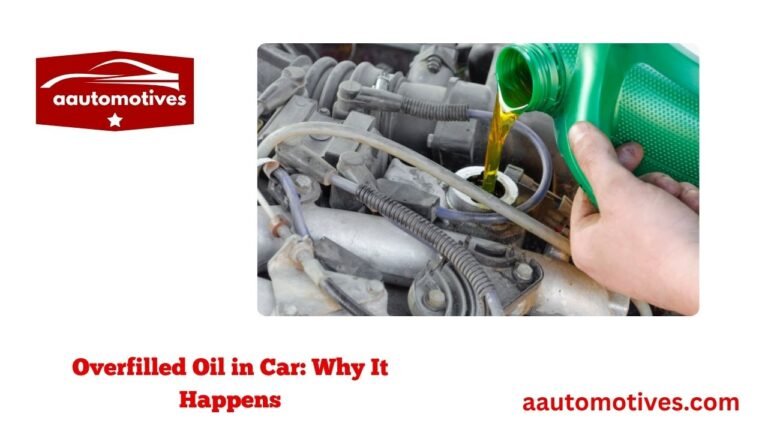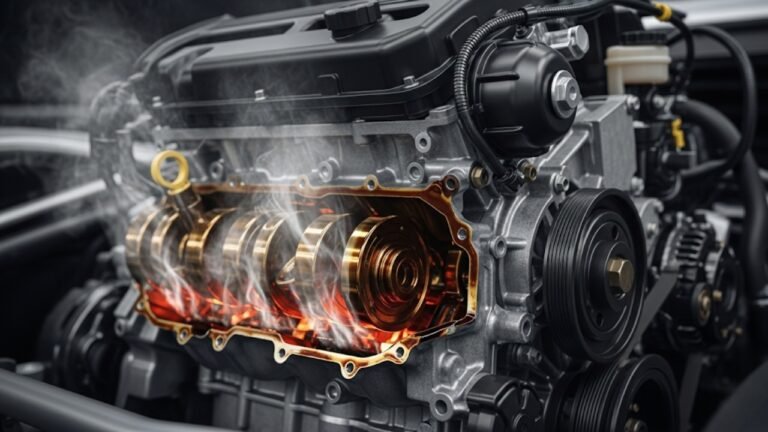How to Fix a Oil Leak in Car: A Friendly Guide

You’re walking to your car on a bright morning, ready to head out. But as you reach your vehicle, something feels off. You glance down and—oh no—there’s a small, dark puddle sitting right under the engine. Yep, it’s oil. That dreaded sign that something isn’t quite right. If you’re wondering how to fix a oil leak in car, you’re not alone. This is one of the most common problems car owners face, but here’s the good news: it’s often fixable, and sometimes without even needing a mechanic.
In this guide, we’ll break down the mystery of oil leaks in simple words. No complex jargon, no mechanic-only talk—just straight-up, easy-to-understand advice, sprinkled with a few personal tips and real-life stories. Whether you’re someone who’s barely changed a tire or a weekend DIY warrior, you’ll walk away knowing what causes oil leaks, how to find them, and most importantly—how to fix a oil leak in car without losing your mind.
Why Oil Leaks Happen: The Sneaky Culprits Behind the Mess

Here are the most common reasons your car may be leaking oil:
-
Worn out gaskets: Over time, rubber gaskets can crack or shrink.
-
Damaged oil pan: Rocks, potholes, or road debris can dent or puncture it.
-
Loose or worn-out oil filter: If it’s not properly sealed, oil will find a way out.
-
Bad seals: Valve cover seals or crankshaft seals often wear with age.
-
Overfilled oil: Too much oil leads to high pressure and eventual leaks.
-
Old engine: Age makes everything a little less tight and a bit more leaky.
Just last year, my cousin was on a road trip through the hills of Sylhet. He noticed the smell of burning oil but brushed it off as “hill driving.” Long story short? His oil filter had a minor crack. Luckily, we fixed it with a quick replacement at a roadside garage. If only he had checked that earlier!
Spotting the Leak: How to Identify Where the Oil is Coming From
Knowing how to fix a oil leak in car starts with finding the source. Imagine being a detective, but instead of tracking footprints, you’re tracing oil stains. Sometimes the leak is easy to spot. Other times, it hides like a cat under furniture.
Signs You’ve Got an Oil Leak:
-
Dark puddles under your car after parking.
-
Burning oil smell, especially when the engine heats up.
-
Low oil levels even after a recent top-up.
-
Smoke from the engine or under the hood.
Once you’ve confirmed it’s an oil leak, it’s time to play detective.
Simple Steps to Locate the Leak:
-
Check under the car: Look for dark spots or oily residue near the engine.
-
Clean the engine area: Use engine degreaser and wipe it down.
-
Run the car for a few minutes: See where the oil starts seeping from.
-
Use UV dye and a blacklight: Mechanics love this trick—it makes leaks glow under light.
| Leak Area | Common Cause | DIY-Friendly? |
|---|---|---|
| Valve Cover Gasket | Old or cracked gasket | Yes |
| Oil Filter | Loose or damaged filter | Yes |
| Oil Pan | Damaged or gasket failure | Yes, with tools |
| Rear Main Seal | Crankshaft seal failure | No (mechanic needed) |
Tools You’ll Need Before You Start Fixing
Fixing an oil leak doesn’t always need a full toolbox, but a few basics will go a long way. You don’t need to be a professional—you just need a little patience and the right tools.
Basic Toolkit Checklist:
-
Socket wrench set
-
Jack and jack stands
-
Oil drain pan
-
Engine degreaser
-
Rubber gloves
-
Replacement gaskets or seals
-
Torque wrench (for tightening bolts properly)
-
Flashlight or work light
-
Funnel and fresh engine oil
If you don’t have these, many can be rented or borrowed. When I fixed my valve cover gasket leak, I didn’t even own a torque wrench—borrowed one from my neighbor and saved myself a trip to the shop.
Step-by-Step: How to Fix a Oil Leak in Car (DIY Style)
Step 1: Identify the Type of Leak
Is the oil dripping slowly, or is it pouring out like a waterfall? If it’s a small leak and your oil light isn’t on, you’ve got time to fix it yourself. Major leaks may require a mechanic.
Step 2: Clean the Engine Area
Spray an engine degreaser around the suspected area and wipe it clean. This helps you get a clear view of where the oil is coming from.
Step 3: Replace the Gasket or Seal
If the valve cover gasket is the issue (a common one), follow these steps:
-
Unbolt the valve cover.
-
Remove the old gasket—you might need a scraper.
-
Install the new gasket, making sure it sits properly.
-
Re-tighten bolts with a torque wrench to avoid over-tightening.
This process takes around 30 to 60 minutes, depending on your car.
Step 4: Replace the Oil Filter (if needed)
Sometimes, the oil filter itself is the problem. Turn it counterclockwise to remove it, clean the area, and screw in the new one—hand tight only.
Step 5: Refill Engine Oil
After fixing the leak, you’ll need to top up the oil. Use a funnel and pour slowly to avoid overfilling. Check the dipstick to make sure the level is right.
When You Shouldn’t DIY: Signs It’s Time for the Mechanic
While learning how to fix a oil leak in car is empowering, not all leaks are meant to be tackled in your garage.
If you notice any of these, call a mechanic:
-
Oil is leaking near the rear of the engine (rear main seal).
-
You smell burning oil inside the car.
-
The leak is fast and constant.
-
There’s oil in your coolant or vice versa.
Some jobs require lifting the engine or using tools most of us don’t have. There’s no shame in getting help—your car (and wallet) will thank you later.
Prevention is Better Than Repair: Simple Tips to Avoid Future Leaks
Once you’ve fixed the problem, you don’t want it to return, right? Thankfully, keeping leaks away is often as simple as taking care of your car like you would a pet—attention and regular checkups.
Tips to Prevent Future Oil Leaks:
-
Change oil on time (as per manufacturer guidelines).
-
Use quality engine oil—cheap ones break down faster.
-
Tighten your oil filter properly.
-
Inspect gaskets and seals during routine maintenance.
-
Avoid engine overheating, which can warp seals and cause leaks.
Think of it like brushing your teeth. You don’t wait for a cavity—you stay ahead of it. Same logic applies here.
Fixing Other Common Oil Leak Spots in Your Car
Not all leaks are created equal. While valve cover gaskets and oil filters are common culprits, there are other parts you should watch out for—especially as your car gets older. Here’s how to tackle a few of them yourself if you’re feeling confident.
Oil Pan Gasket Replacement
This is one of the most frequent leak zones, especially if you’ve driven over rough roads or bottomed out the engine.
Steps:
-
Raise the car safely using jack stands.
-
Place an oil drain pan beneath the oil pan.
-
Remove the oil drain plug and let all the oil drain.
-
Unscrew the bolts holding the oil pan.
-
Scrape off the old gasket material.
-
Place a new gasket and reattach the pan, torquing bolts to spec.
Tip: Let the gasket set overnight before starting the engine again.
Front or Rear Main Seal Leak
This one is tricky. These seals sit around the crankshaft and require the transmission or engine to be removed to reach them.
My honest advice? Don’t try this at home unless you’ve got major tools, a lift, and experience. One of my friends tried it in his garage and ended up towing the car to a shop halfway through.
In this case, it’s smarter—and cheaper long term—to see a mechanic.
DIY vs Mechanic: What’s the Real Cost?
Understanding how to fix a oil leak in car often comes down to time vs money. Sometimes fixing it yourself is a no-brainer. Other times, it makes sense to spend a little and save a lot of headache.
Here’s a breakdown:
| Repair Type | DIY Cost | Mechanic Cost | Difficulty |
|---|---|---|---|
| Oil Filter Replacement | $10–$25 | $40–$75 | Easy |
| Valve Cover Gasket | $20–$40 | $150–$250 | Moderate |
| Oil Pan Gasket | $30–$60 | $200–$400 | Moderate |
| Rear Main Seal | Not DIY recommended | $500–$1,000+ | High (shop only) |
When in doubt, think of it this way: If it’s easy to reach and doesn’t require pulling the engine or transmission—try it yourself. If not, don’t risk it.
A Real Story: When an Oil Leak Nearly Wrecked My Engine
A few years ago, I was driving home from a beach trip when I noticed the oil pressure warning light blink. I pulled over and checked the dipstick—bone dry. Turns out, my oil cooler seal had cracked, slowly leaking oil all over the undercarriage.
Because I didn’t catch it early, the engine was running hot and dangerously low on oil. Luckily, I stopped in time. But if I had ignored it and kept driving, I could’ve seized the engine.
Moral of the story? Watch your oil levels. A quick glance at the dipstick once a week can save you thousands of dollars.
Helpful Checklist: After You Fix an Oil Leak
Once you’ve completed the fix, there are a few things you should double-check before you call it a day.
Post-Fix Checklist:
-
Check for fresh leaks after a 10–15 minute engine run.
-
Look under the car after parking overnight.
-
Monitor your oil levels daily for a week.
-
Watch for the oil pressure warning light.
-
Keep a cardboard sheet under the car to spot new drips.
Being proactive ensures you don’t undo your hard work.
Frequently Asked Questions (FAQs)
1. How do I know if my car is leaking oil or another fluid?
Answer: Oil is typically brown or black and slick to the touch. If it’s red or green, it might be transmission or coolant fluid. A burnt oil smell is another dead giveaway.
2. Can I still drive my car if it’s leaking oil?
Answer: Yes, but only short distances—and only if the leak is small and your oil level is safe. Never drive with the oil warning light on. It’s like running a marathon without water!
3. How long does it take to fix an oil leak?
Answer: A simple gasket replacement can take 30 minutes to 2 hours. More complex repairs (like rear seals) can take an entire day or more at the shop.
4. Is oil stop leak a good solution?
Answer: It can help for very small leaks in old cars. But it’s a temporary fix and shouldn’t be relied on for long-term solutions. Think of it like a band-aid, not surgery.
5. How much oil loss is normal between oil changes?
Answer: A small amount—say, half a quart over 5,000 km—is okay. But if you’re topping off oil every week, there’s likely a leak or burning issue.
6. Can a clogged PCV valve cause oil leaks?
Answer: Yes! A bad PCV valve can create pressure in the crankcase, pushing oil out of seals. It’s a cheap fix that’s often overlooked.
7. What kind of oil should I use after a repair?
Answer: Use the oil grade recommended in your owner’s manual. If your engine is older and has leaks, a high-mileage oil may help condition the seals.
8. Why is my oil leaking only when the engine is cold or hot?
Answer: Heat causes metal to expand. Some seals may leak only under heat and pressure. If your leak is temperature-specific, it’s likely a gasket issue.
Conclusion: Keep Calm and Fix the Leak
Oil leaks are stressful—but they don’t have to be scary. Once you know how to fix a oil leak in car, you gain confidence, save money, and take better care of your ride. Whether it’s a leaky valve cover or a dripping oil filter, the fix often lies in patience, good tools, and the right guidance.
The next time you spot that puddle, don’t panic. Take a breath, pop the hood, and follow the steps in this guide. And if it feels too complex, there’s no shame in calling your local mechanic. What matters most is keeping your engine safe, sound, and happy for the long haul.






